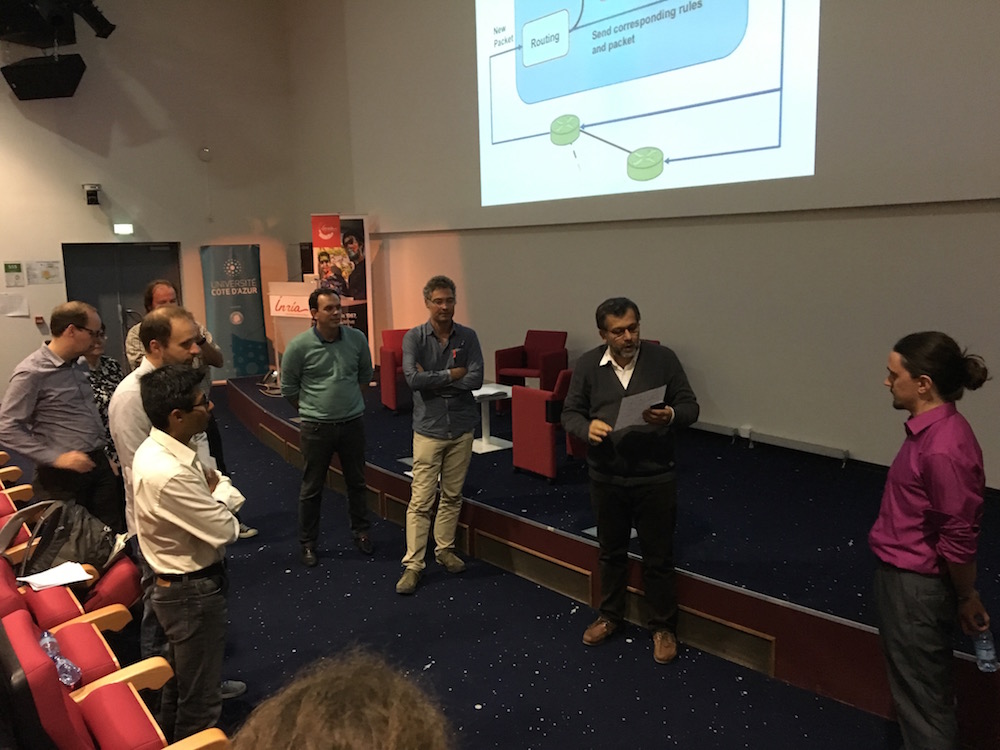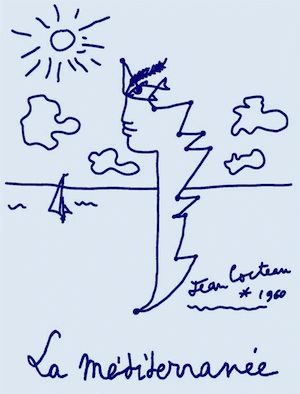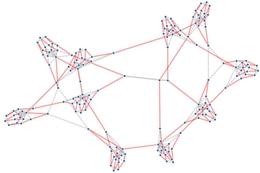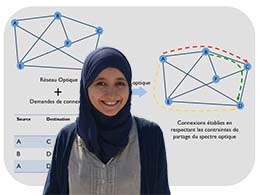-
- Title: “Energy Efficient Software Defined Networks”
- When: September 28, 2017 — 14:30
- Where: Inria Sophia Antipolis, amphi Kahn
- Committee:
- Walid Dabbous, Inria, Sophia Antipolis, France
- Frédéric Giroire (Supervisor), CNRS, Sophia Antipolis,
- Brigitte Jaumard, Concordia University, Montréal, Canada
- Arie M.C.A Koster (Referee), RWTH Aachen, Germany
- Laurent Lefèvre (Referee), Inria, Lyon, France
- Jérémie Leguay, Huawei Technologies, Paris, France
- Dino Lopez (Supervisor), UCA, I3S, UNS, Sophia Antipolis, France
- François Vanderbeck, Université de Bordeaux & Inria, France
-
Abstract: In the recent years, the growth of the architecture of telecommunication networks has been quickly increasing to keep up with a booming traffic. Moreover, the energy consumption of these infrastructures is becoming a growing issue, both for its economic and ecological impact. Multiple approaches were proposed to reduce the networks’ power consumption such as decreasing the number of active elements. Indeed, networks are designed to handle high traffic, e.g., during the day, but are over-provisioned during the night. In this thesis, we focus on disabling links and routers inside the network while keeping a valid routing. This approach is known as Energy Aware Routing (EAR).
However current networks are not adapted to support the deployment of network-wide green policies due to their distributed management and the black-box nature of current network devices.The SDN and NFV paradigms bear the promise of bringing green policies to reality.The first one decouples the control and data plane and thus enable a centralized control of the network.The second one proposes to decouple the software and hardware of network functions and allows more flexibility in the creation and management of network services.
In this thesis, we focus on the challenges brought by these two paradigms for the deployment of EAR policies. We dedicated the first two parts to the SDN paradigm. We first study the forwarding table size constraints due to an increased complexity of rules. We then study the progressive deployment of SDN devices alongside legacy ones. We focus our attention on the NFV paradigm in the last part, and more particularly, we study the Service Function Chaining problem.
All the publications at the core of this thesis are available online here












